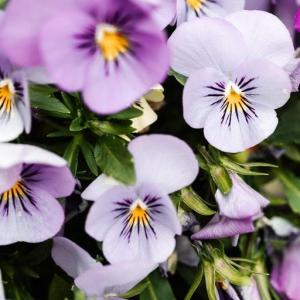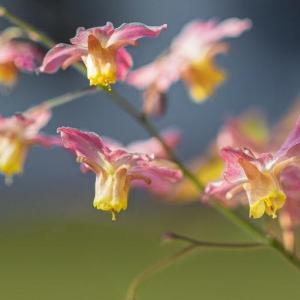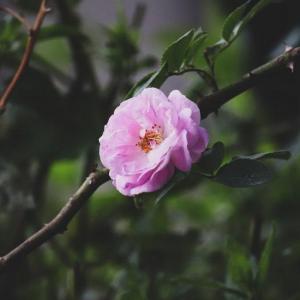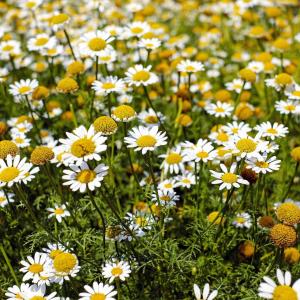

Tree ivy (Fatshedera lizei) is a rare hybrid of two species from separate genera: Hedera helix and Fatsia japonica (glossy-leaved paper plant) (English ivy). The resultant hybrid features five-lobed English ivy leaves and the shrub-like form of a glossy-leaved paper plant. It has glossy, dark green evergreen leaves that may range in size from 4 to 10 inches. The perennial plant naturally forms a mound and has trailing branches, but it may be coaxed to grow into a tighter shrub shape by trimming. Although this plant is grown primarily for its foliage, it does produce tiny cream flowers in clusters in the fall. Tree ivy grows slowly, and the spring is the optimum season to plant it.
Care for Tree Ivy
Make careful to leave a minimum of 3 to 6 feet between each plant when you plant tree ivy outdoors. Choose a container with enough drainage holes for container development that is only slightly bigger than the root ball. If you want the plant to grow more like a vine, you will need to stake it or connect it to another kind of support, such a trellis, since it lacks the clinging capacity of genuine ivy. Alternately, you may just let it spread out as a ground cover.
Plan to routinely water, feed, and trim your tree ivy to keep it in the ideal form and size. Usually, the plant doesn't have any major insect or disease problems. Watch out for several common plant pests, such as aphids, mealybugs, and spider mites. 1 Make careful to look for evidence of the tiny insects on the undersides of leaves and to treat any infestations as soon as possible.
Light Dappled light is ideal for tree ivy growth. However, too little light may cause lanky, fragile stems and tiny, dull leaves. A location adjacent to a light window that is out of the direct sun is great for indoor growing.
The ideal soil for this plant is rich, loamy, with a pH range of slightly acidic to neutral and excellent drainage. For container growth, a light, all-purpose potting mix is acceptable.
Water
Even soil moisture is ideal for tree ivy, but persistently wet soil may damage the plant's roots.
1 When the soil starts to feel a little bit dry throughout the growth season (spring to autumn), water. Reduce watering throughout the winter months when the plant has gone dormant in order to keep the soil from entirely drying up. Leaf drop and yellowing of the leaves are two possible symptoms of overwatering in tree ivy.
Thermodynamics and Humidity
The ideal temperature range for tree ivy to flourish is between 50 and 70 degrees Fahrenheit. In warmer locations, it's crucial to provide a tree ivy plant shade and enough water since excessive heat may lead to leaf drop and eventually kill the plant. Although the plant may tolerate some cold, it can die back at temperatures below 20 degrees Fahrenheit. 1 When warm weather returns, the plant may still reappear from its roots if the temperature doesn't drop too much.
Additionally, tree ivy prefers a moderate to high humidity level. To increase the humidity surrounding a container plant, set it on a tray with water and stones. The plant might benefit from regular spraying to help increase the humidity to its preferred level. When exposed to dry air for an extended period of time, tree ivy plants' leaves might become brown and fall off.
Fertilizer
Tree ivy may feed from moderately to heavily. Feed your plant with a houseplant fertilizer throughout the growth season, as directed on the package. In the winter, fertilizer is not required.
Tree ivy may be lightly pruned at any time to shape it anyway you choose. And if it isn't pruned, it may begin to seem unkempt. Pinch off new growth on the stems to encourage the bushier growth habit that many gardeners like, particularly for houseplants. More branches will result as a result.
Developing Tree Ivy
Tree ivy plants are sterile, hence it is impossible to cultivate it from seed. However, stem cuttings are a rather simple method of propagation. Just cut off a section of the stem that is about 6 inches long. After removing the lower half's leaves and injecting rooting hormone into the cut end, place the plant in a soilless potting mixture. Keep the growth medium wet and the cutting in a warm area with indirect light (but not soggy). As soon as you can gently pull on the stem and experience resistance, you'll know it has established roots.
Variety of Tree Ivy
Tree ivy comes in a number of kinds with different leaf shapes and sizes:
A 6-foot-tall cultivar of Fatshedera lizei called "Variegata" has leaves with cream-colored borders.
The leaves of x Fatshedera lizei 'Curly' are unusually curled.
A shorter (4-foot) variation of x Fatshedera lizei called "Ribbon Candy" has wavy leaves that have a pale green tint. It grows well as a shrubby plant. The 8-foot-tall form of Fatshedera lizei known as "Annemieke" has large leaves with yellow patterns.
文章
sososo赞了

共1条评论


sososo
2022年07月18日
0
thanks😘









